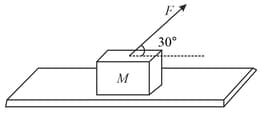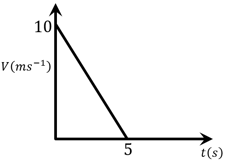Types of Friction
Types of Friction: Overview
This Topic covers sub-topics such as Kinetic Friction
Important Questions on Types of Friction
A conveyor belt is moving at a constant speed of . A box is gently dropped on it. The coefficient of friction between them is The distance that the box will move relative to belt before coming to rest on it taking , is
A block B is pushed momentarily along a horizontal surface with an initial velocity v. If is the coefficient of sliding friction between B and the surface, block B will come to rest after a time

Two block and of equal masses are placed on a rough inclined plane as shown in figure. When (and where) will the two blocks come on the same line on the inclined plane if they are released simultaneously? Initially the block is behind the block . Co-efficient of kinetic friction for the blocks and are and respectively

In the figure masses and are and respectively. The coefficient of friction between and ground is zero. The coefficient of friction between and and that between and ground is The pulleys and the strings are massless. The string is perfectly horizontal between and and also between and The string is perfectly vertical between and An external horizontal force is applied to the mass Take
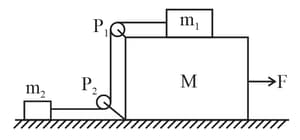
(a) Draw a free-body diagram for mass clearly showing all the forces.
(b) Let the magnitude of the force of friction between and be and that between and ground be For a particular it is found that Find and Write equations of motion of all the masses. Find tension in the string and acceleration of the masses.
Masses are connected by strings of negligible mass which pass over massless and frictionless pulleys as shown in the figure. The masses move such that the portion of the string between is parallel to the inclined plane and portion of the string between is horizontal. The masses are each and coefficient of kinetic friction between the masses and the surfaces is 0.25. The inclined plane makes an angle of with the horizontal. If the mass moves downwards with a uniform velocity, find the tension in the horizontal portion of the string.
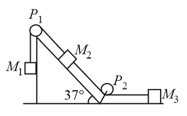
In the diagram shown, the blocks weight, respectively. The coefficient of sliding friction between any two surface is . A is held at rest by a massless rigid rod fixed to the wall while and are connected by a light flexible cord passing around a frictionless pulley. Find the force necessary to drag along the horizontal surface to the left at constant speed. Assume that the arrangement shown in the diagram, , is maintained all through.
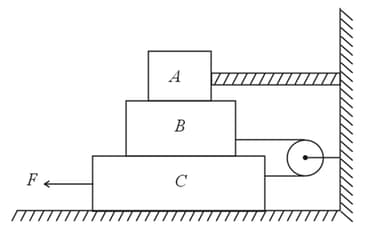
a marble block of mass lying on the ice when given a velocity of is stopped by frictional force in . Then the coefficient of friction is
(take )
A block of mass is given a velocity of horizontally on a rough horizontal plane. The following graph shows the velocity -time graph of the motion. The coefficient of kinetic friction between the plane and block is ()
A horizontal force of is applied to a block at rest on the horizontal surface If the coefficient of kinetic friction is the acceleration of the block is
A block of mass is lying on a rough horizontal surface. The coefficient of static and kinetic friction are and and . If a horizontal force of is applied on the block, the frictional force is
Two blocks of masses and connected by a light rod and the system is slipping down a rough incline angle with the horizontal. The frictional coefficient at both the contacts is . If the acceleration of the system is , the value of is (Use )
The kind of force that acts between moving surfaces is called _____.
How many types of friction are there? Explain each of them.
A skater weighing throws a stone of mass with a velocity of standing on ice. Coefficient of kinetic friction is . The distance through which he moves back is:
Consider a car moving on a straight road with a speed of The distance at which car can be stopped is ]
Two cars of unequal masses, use similar tyres. If they are moving at the same initial speed, the minimum stopping distance
In figure, the coefficient of friction between the floor and the block is . The coefficient of friction between the blocks and is . The mass of is and of is. What is the maximum horizontal force can be applied to the block so that two blocks move together?
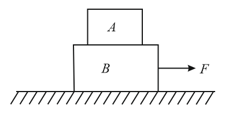
A block of mass is placed on rough horizontal surface whose coefficient of friction is If a horizontal force of is applied on it, then acceleration of the block will be
A block of mass is resting on a rough horizontal surface for which the coefficient of friction is . When the force is applied, the acceleration of the block will be
